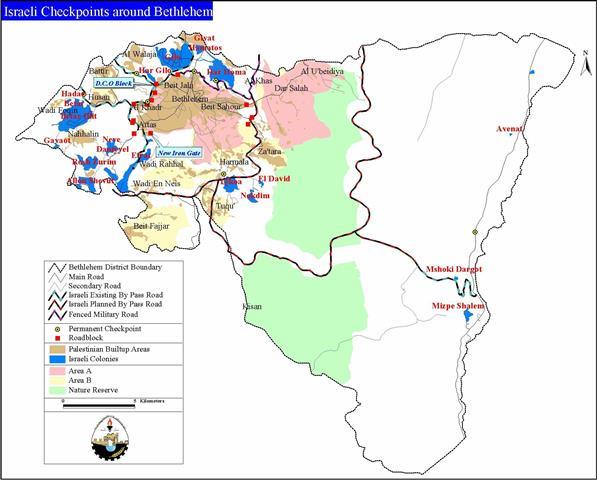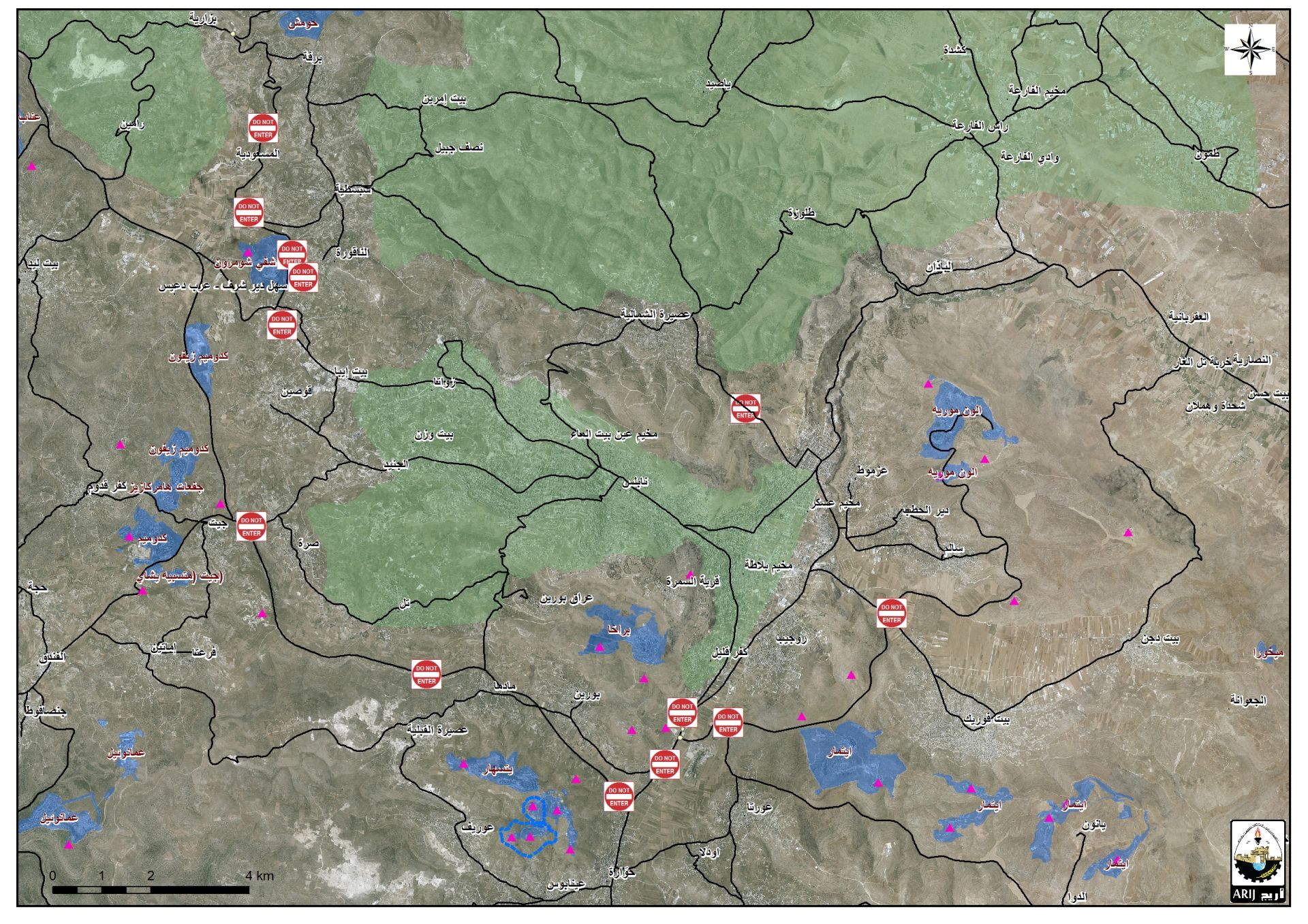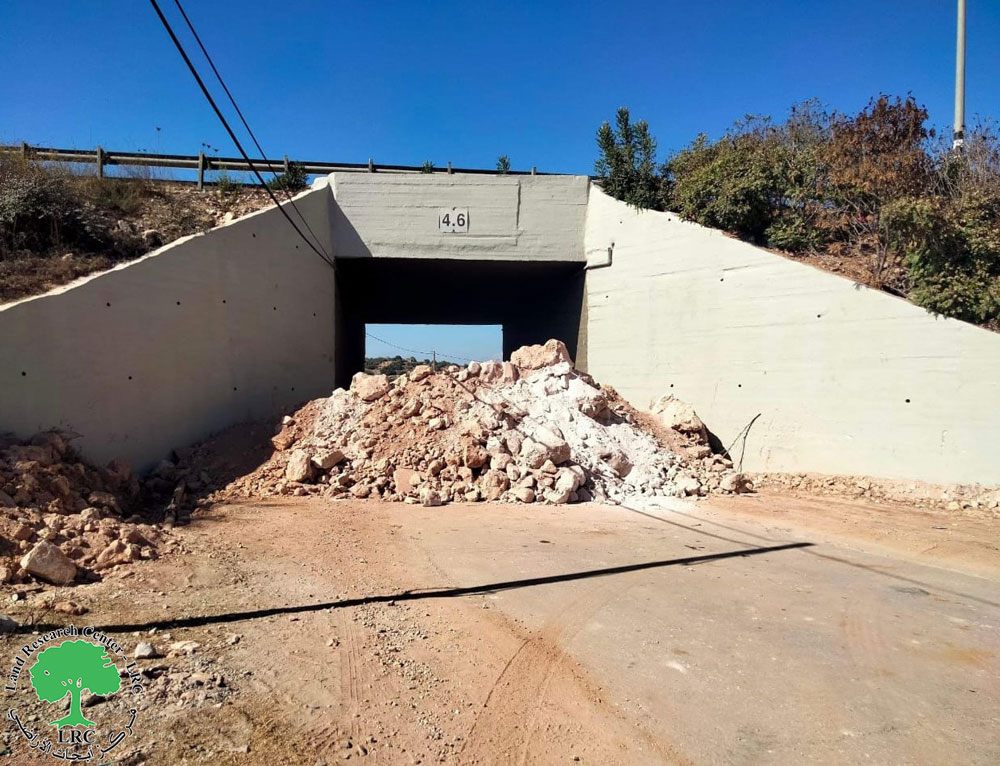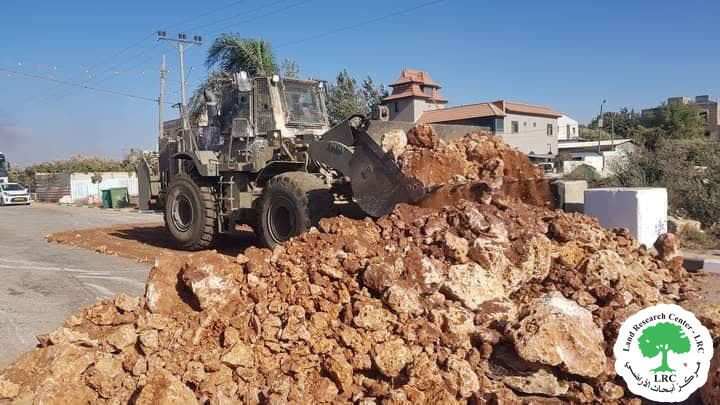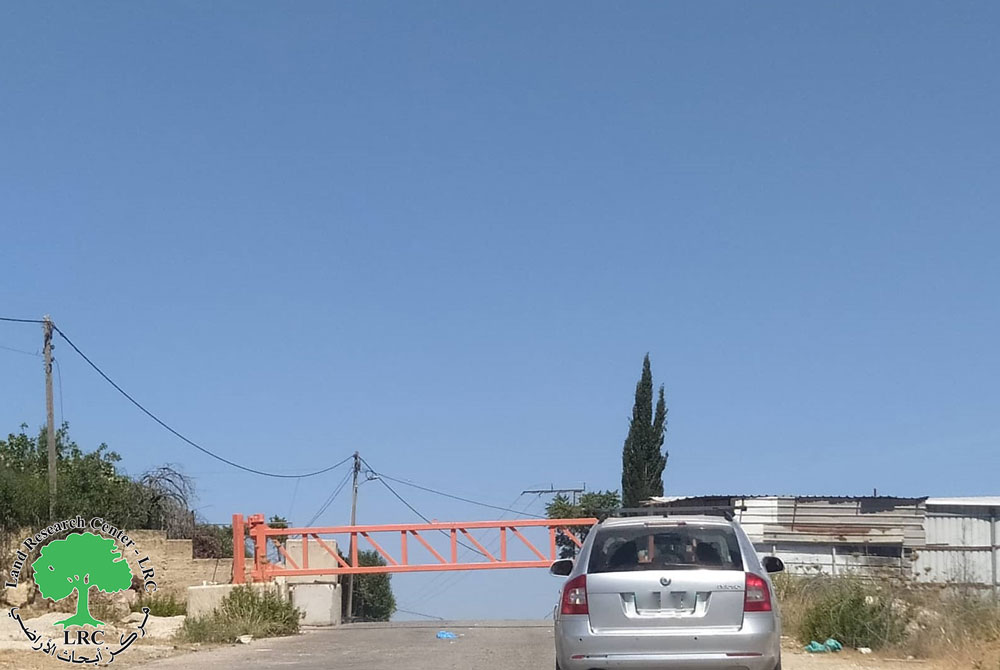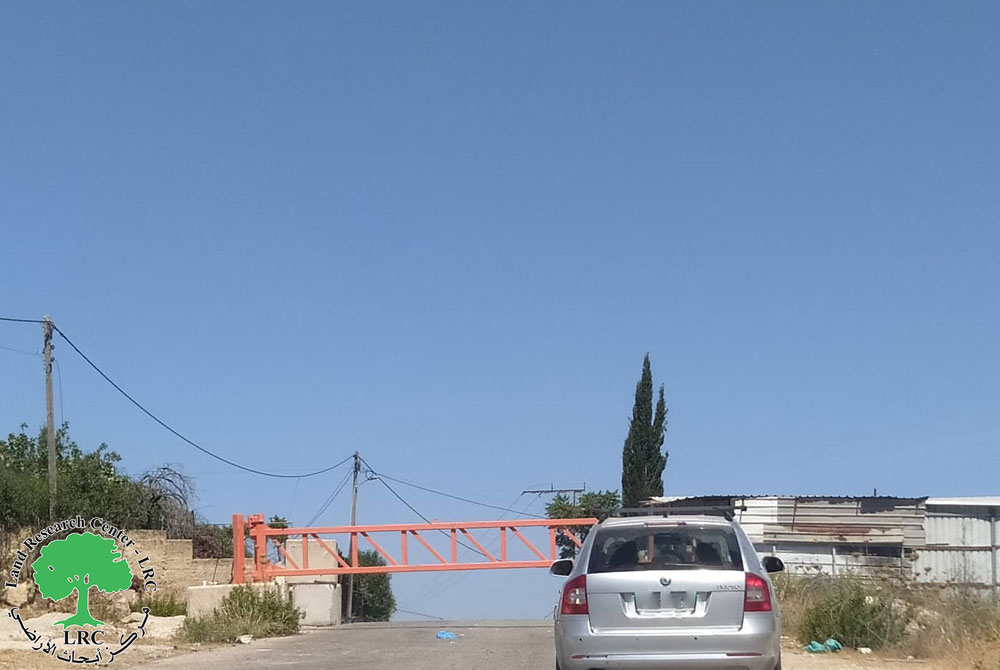For the sixth time since the beginning of the Al-Aqsa Intifada, the Israeli occupation forces re-occupied all parts of the Palestinian National Authority area in Bethlehem district on the 22nd of November 2002, and imposed a tight curfew on the region imprisoning almost 38000 Palestinians. People are not allowed to leave their homes for any reason, thus are prevented from reaching their work places and practicing their rights for a peaceful daily life. See Map 1
After a week of imposed curfew on the district, the Israeli forces started lifting the curfew partially every few days and for few hours only. From November 22 2002 to December 15 2002 the curfew was lifted five times only, which equals in total approximately 24 hours. Most of the times when the curfew was partially lifted, many temporary Israeli checkpoints and roadblocks were erected (under the pretext of security, as usual) and blocked the entrances of the district, thus preventing Palestinian citizens, especially those living in rural areas from entering the re-occupied area. See Photo 1
This sophisticated network of checkpoints and roadblocks has also resulted that Palestinians were obliged to take new routes that take twice the usual time, and distance. Travel costs have been doubled, and in most cases the only alternative to reach destination is on foot, using unpaved roads through the mountains and agricultural fields. See Map 2 & Photo 2
There is always a worry that the Israelis will impose the curfew again before the end of the period of the ''announced period of partial lifting''. Most of the times, some people are forced to spend the night outside their towns and villages because they are prevented from crossing the various checkpoints located between Palestinian town and villages throughout Bethlehem district.
Those checkpoints are effective because they severely inhibit movement from one community to another and interrupt the functioning of the economic, social and services sectors such as ambulances which most of the times are prevented from doing their duties.
Furthermore and as a consequence of this tight closure, Bethlehem University has not been able to open its to its students for the last 20 days. The university's administration fears that the whole semester would be delayed, as too many teaching hours have been lost. Through the partial lifting of curfew, the students rush to compensate some of the lost hours and they also work hard at home to finish the required material. Schools were also affected as a result of this tight closure, and almost 45000 students were denied their rights to get a proper education.
Bethlehem area along with the major cities of the district, Beit Sahour and Beit Jala, are considered the center of public services, such as health, education, banks and other commercial services. Undertaking daily chores and doing simple things like going to one's work or delivering a parcel have become now an ordeal in itself because everything has to be hand carried and the use of carts and animals for transportation became impossible. It also shows the increasing human suffering faced, especially at those temporary checkpoints and roadblocks during winter season.
Through its actions, the Israeli Government is exercising the cruelest forms of humiliation against the Palestinian people and violating all forms of international laws that relate to human rights. Its closure policy is to strangulate scores of the district from the bottleneck thus, the people end up playing a game of cat-and-mouse as the Israeli armored vehicles go one way and the people go the other in order to avoid those restricted roads, cement fences, barbed wire checkpoints and roadblocks.
Prepared by:
The Applied Research Institute – Jerusalem


